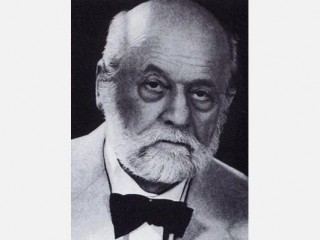
Auguste Perret biography
Date of birth : 1874-02-12
Date of death : 1954-02-25
Birthplace : Ixelles, Belgium
Nationality : French
Category : Arhitecture and Engineering
Last modified : 2010-12-29
Credited as : Architect, building contractor,
Auguste Perret , a French architect and building contractor, was one of the first to use concrete as an architecturally significant material, and his works had an important influence upon the International Style of the 1920s in Europe.
Auguste Perret the son of a building contractor, was born at Ixelles near Brussels on Feb. 12, 1874. His early theoretical training came from reading the works of Eugene Emmanuel Viollet-le-Duc, who advocated the reintegration of architectural form and techniques of construction, which had gone separate ways in the 19th century. Perret studied at the ecole des Beaux-Arts (1891-1895) in Paris in the studio of Julien Guadet, from whom he learned traditional classical composition and theory. Perret left without a degree and joined his father's firm. This, at the death of the elder Perret in 1905, became Perret Frères, including as principals Auguste and his brother Gustave. Perret Freres both designed its own buildings and executed the designs of others in reinforced concrete.
Reinforced concrete combines the monolithic compressive strength of concrete with the tensile strength of steel rods. Its use in building began in the late 19th century. Perret raised the material to architectural distinction in such buildings as the three upon which his reputation principally rests: an apartment building at 25b Rue Franklin (1903) and a garage at 51 Rue de Ponthieu (1905), both in Paris, and the Church of Notre Dame (1922) at Le Raincy near Paris.
At the Rue Franklin apartment the reinforced-concrete frame is for the first time clearly expressed, if not exposed, on the exterior. The frame is covered with smooth ceramic tiles, whereas the nonstructural wall panels are covered with tiles bearing a foliate pattern. The structural frame, in addition, creates point supports that eliminate stationary, load-bearing partitions within the apartments, and this results in potentially flexible, open plans.
The facade of the garage is an exposed reinforced-concrete frame filled in with glass and arranged according to classical rules rather than by inner structural logic. Its stark rectangularity and openness made it a favorite of the next generation of architects.
The church at Le Raincy is perhaps Perret's most impressive design. Nave and side aisles of nearly identical height are separated by tall, very slender reinforced-concrete columns sustaining overhead thin concrete vaults. The exterior walls surrounding this light, open hall are mere screens of precast, concrete latticework filled with colored glass that changes from yellow at the entrance to purple behind the altar. Such works helped to establish concrete as an acceptable architectural material in the 20th century, even if they did little to further the technology of reinforced-concrete construction.
Perret continued to be active to the end of his life, rebuilding, for example, the destroyed centers of Le Havre and Amiens after World War II. He died in Paris on Feb. 25, 1954.
The basic work on Perret is Peter Collins, Concrete: The Vision of a New Architecture (1959), the last half of which is devoted to "The Contribution of Auguste Perret." A slightly different interpretation of his work is in Reyner Banham, Theory and Design in the First Machine Age (1960). Bernard Champigneulle, Perret (1959), in French, is an indispensable reference work because of its many good photographs and drawings of Perret's work. Henry-Russell Hitchcock, Architecture: Nineteenth and Twentieth Centuries (1958; 2d ed. 1963), contains a chapter on Perret's work.
















